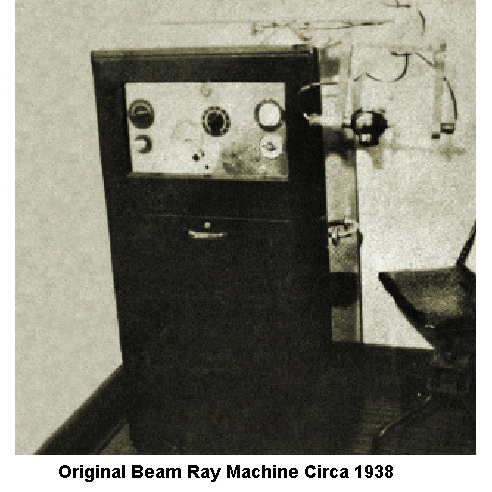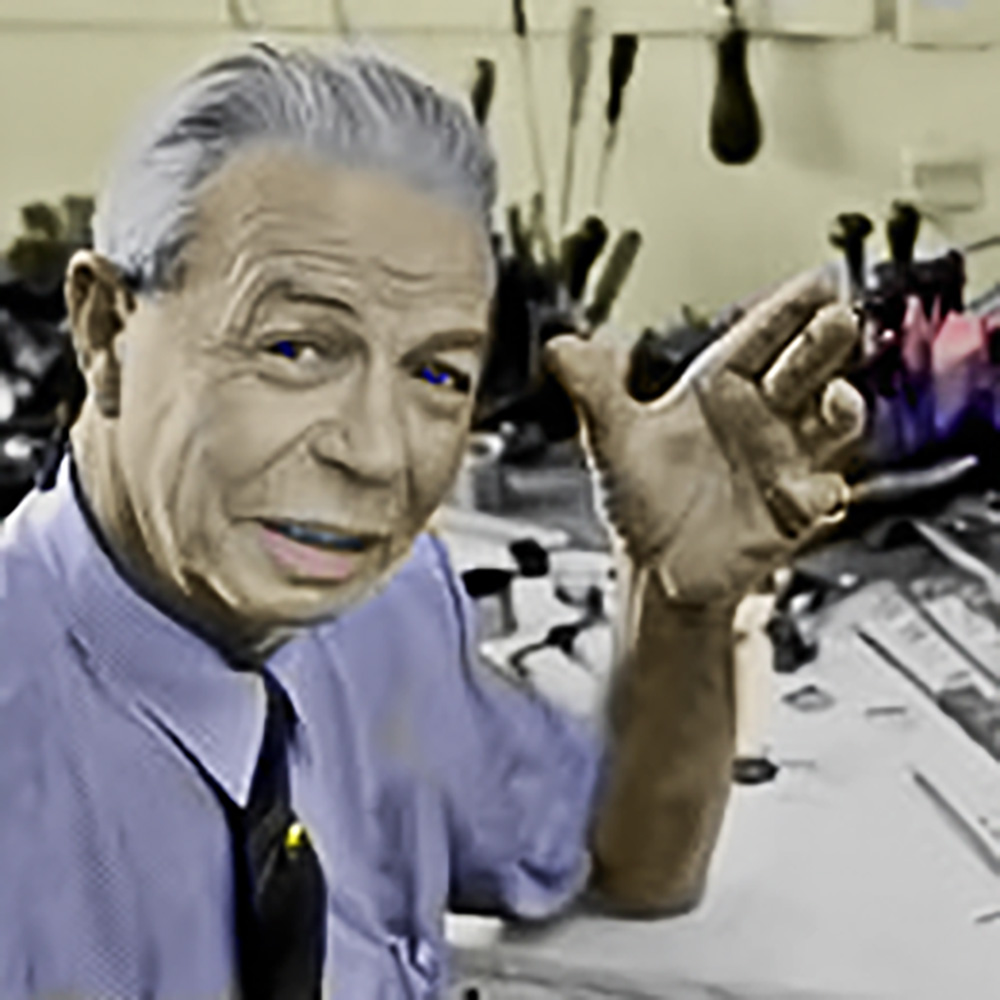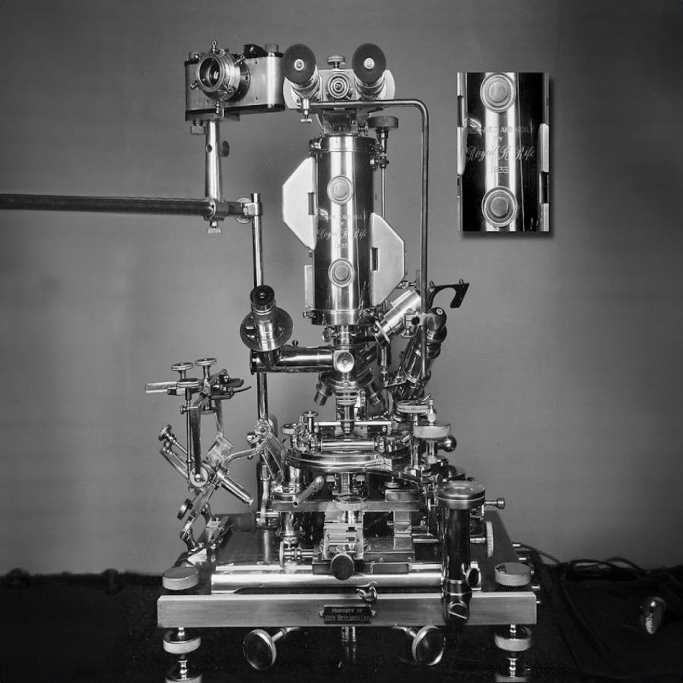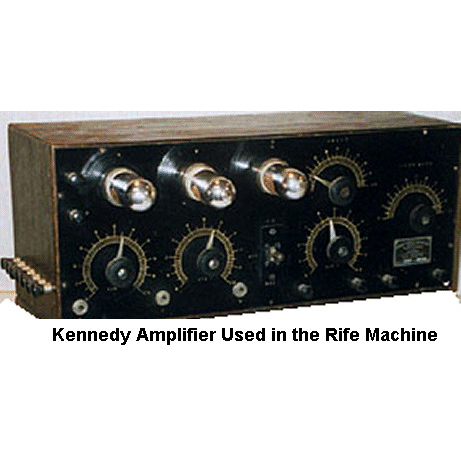
The full story of the cancer clinic of 1934 may never be known. Rife’s records were lost when he foolishly loaned them to Dr. Arthur Yale a few years later. Yale had started his own clinic and apparently wanted to compare notes. After Rife learned that Dr. Yale was altering the Royal Rife Machine and thus failing to get results, Rife and Yale had an argument which marked a permanent separation. More disturbing is that after AMA pressure forced a law suit against the production company making the Royal Rife Machines, many of the doctors who were involved became exceedingly cautious. And after Milbank Johnson’s death, the records at the University of Southern California “mysteriously disappeared.”
Pieces of evidence do exist and while the clinical records are gone, there is sufficient documentation to know that astounding results did take place and that the Special Medical Research Committee did continue to exist. The listings under the name of Milbank Johnson in Who’s Who for 1944-45 (Johnson died October 3, 1944) include: “Professor physiology and clinical medicine, University of Southern California 1897-1901, now Chairman special medical research committee of the university.”
Until Johnson’s death in 1944, he was still actively the head of the committee. For 10 years from its creation in 1934, Johnson’s University of Southern California Medical Research Committee was in existence. Given the fact that testimonials exist describing what occurred and that Johnson ran his own clinic from 1935 to 1938, there is no reason to believe-as later was implied by the AMA and the California State Public Health agency-that the existence of a successful cancer treatment in 1934 using the Royal Rife Machine was a myth. Documents show the clinic existed and succeeded in curing cancer. And doctors who continued treating seriously ill people with success because of what the Royal Rife Machine accomplished in 1934 tell the real story, as do the signed reports from cured cancer patients in later years.
Dr Johnson eventually handed his authority over to Dr. James Couche of San Diego. Couche was not a heavyweight in California medical circles as was Johnson. It was a poor choice if the goal was to move the medical profession toward acceptance and widespread use of Rife’s new healing technology. The result was total failure. But Couche was the right choice if the standard was to choose a man who would not quit or knuckle under to the AMA. Couche used the Royal Rife Machine for 22 years and reported for the record-if only briefly-on his continued success with a Royal Rife Machine that stayed calibrated as Rife insisted it had to be if it was to destroy the pathologic micro-organisms in people. But all that lay ahead.
In the summer of 1934, 16 terminally ill people with cancer and other diseases were brought to the Scripps “ranch.” There, as Rife and the doctors worked on human beings for the first time, they learned much. The early patients were exposed to the Royal Rife Machine frequencies for only 3 minutes, but Rife soon learned that if a treatment was given every day, the toxins from the dead micro-organisms accumulated faster than the body could dispose of them. When he switched to a treatment of 3 minutes every 3rd day, the patients began healing swiftly.
In 1953 when Rife copyrighted his book, he made the real report of what happened in 1934. Anyone who has examined his life, his patience, his scientific commitment, and the correctness of his filtration studies (which are now being verified by bacteriologists who never heard his name) must consider that his own scientific report of the 1934 cancer clinic carries some weight. He wrote: “With the Royal Rife Machine treatment, no tissue is destroyed, no pain is felt, no noise is audible, and no sensation is noticed. A tube lights up and 3 minutes later the treatment is completed. The virus or bacteria is destroyed and the body then recovers itself naturally from the toxic effect of the virus or bacteria. Several diseases may be treated simultaneously.
“The first clinical work on cancer was completed under the supervision of Milbank Johnson, M.D. which was set up under a Special Medical Research Committee of the University of Southern California. 16 cases were treated at the clinic for many types of malignancy. After 3 months, 14 of these so called hopeless cases were signed off as clinically cured by the staff of five medical doctors and Dr. Alvin G. Foord, M.D. Pathologist for the group. The treatments consisted of 3 minutes duration using the Royal Rife Machine which was set on the mortal oscillatory rate for ‘BX’ or cancer (at 3 day intervals). It was found that the elapsed time between treatments attains better results than the cases treated daily. This gives the lymphatic system an opportunity to absorb and cast off the toxic condition which is produced by the devitalized dead particles of the ‘BX’ virus. No rise of body temperature was perceptible in any of these cases above normal during or after the Royal Rife Machine treatment. No special diets were used in any of this clinical work, but we sincerely believe that a proper diet compiled for the individual would be of benefit.” Date: December 1, 1953 Written by R. R. Rife
Other members of the clinic were Whalen Morrison, Chief Surgeon of the Santa Fe Railway, George C. Dock, M.D., internationally famous, George C. Fischer, M.D., Children’s Hospital in New York, Arthur I. Kendall, Dr. Zite, M.D., professor of pathology at Chicago University, Rufus B. Von Klein Schmidt, President of the University of Southern California. Dr. Couche and Dr. Carl Meyer, Ph.D., head of the Department of Bacteriological Research at the Hooper Foundation in San Francisco were also present. Dr. Kopps of the Metabolic Clinic in La Jolla signed all 14 reports and knew of all the tests from his personal observation.
A week after the clinic ended, Kendall wrote to Mrs. Bridges, wife of Rife’s original sponsor: “This afternoon (December 20, 1934) 1 have a meeting with Mr. Hardin. President of the Board of Trustees of the University; he is much interested in Roy and his splendid work, and I shall be asked to tell what I saw during my very brief visit to California. Mr. Hardin, unlike many persons, is very friendly, and will take the proper view of the work: that it is experimental so far, done with no rules of the game to go by, and with a machine that is designed for small output, and therefore, not capable of showing its full worth. I understand there is to be a new machine, embodying the facts learned from the old one, and built along more lusty lines so its output will be more nearly equal to the demands which should be put upon it. I have written to Dr. Johnson telling him about the one case I can talk intelligently about: Tom Knight. Roy will tell you about Tom: he seems to me to be the most important case of the entire series because his tumor was on the cheek, where it could be seen, watched and measured from the start to the finish. This I have done, reciting the actual measurements, and details of treatment and of pathological examination.”
One year later on December 18, 1935, Milbank Johnson wrote to Dr. Thomas Burger and Dr. C. Ray Launsbeny of San Diego: “This will introduce to you Mr. Thomas Knight. He was the man who had the carcinoma over the malar bone of his left cheek that we treated at the clinic in La Jolla last year.” In 1956, Dr. James Couche made the following declaration: “I would like to make this historical record of the amazing scientific wonders regarding the efficacy of the frequencies of the Royal R. Rife Machine. . . . “When I was told about Dr. Rife and his Royal Rife Machine at the Ellen Scripps home near the Scripps Institute Annex some twenty-two years ago, I went out to see about it and became very interested in the cases which he had there. And the thing that brought me into it more quickly than anything was a man who had a cancer of the stomach. Rife was associated at that time with Dr. Milbank Johnson, M.D., who was then president of the Medical Association of Los Angeles, a very wealthy man and a very big man in the medical world the biggest in Los Angeles and he had hired this annex for this demonstration over a summer of time.
Dr. James Couche continues; “In that period of time I saw many things and the one that impressed me the most was a man who staggered onto a table, just on the last end of cancer; he was a bag of bones. As he lay on the table, Dr. Rife and Dr. Johnson said, ‘Just feel that man’s stomach.’ So I put my hand on the cavity where his stomach was underneath and it was just a cavity almost, because he was so thin; his backbone and his belly were just about touching each other. “I put my hand on his stomach which was just one solid mass, just about what I could cover with my hand, somewhat like the shape of a heart. It was absolutely solid! And I thought to myself, well, nothing can be done for that. However, they gave him a treatment with the Rife frequencies and in the course of time over a period of six weeks to two months, to my astonishment, he completely recovered. He got so well that he asked permission to go to El Centro as he had a farm there and he wanted to see about his stock.”
Dr. Rife said, ‘Now you haven’t the strength to drive to El Centro.’ ‘Oh, yes’ said he. ‘I have, but I’ll have a man to drive me there.’ As a matter of fact, the patient drove his own car there and when he got down to El Centro he had a sick cow and he stayed up all night with it. The next day he drove back without any rest whatsoever – so you can imagine how he had recovered. “I saw other cases that were very interesting. Then I wanted a copy of the Royal Rife Machine. I finally bought one of these Royal Rife Machines and established it in my office. “I saw some very remarkable things resulting from it in the course of over twenty years. “I had a Mexican boy, nine years of age, who had osteomyelitis of the leg. He was treated at the Mercy Hospital by his attending doctors. They scraped the bone every week. It was agonizing to the child because they never gave him anything; they just poked in there and cleaned him out and the terror of that boy was awful. He wore a splint and was on crutches. His family brought him to the office. He was terrified that I would poke him as the other doctors had done. 1 reassured him and demonstrated the instrument on my own hand to show him that it would not hurt. With the bandage and splint still on he was given a treatment. In less than two weeks of treatment the wound was completely healed and he took off his splints and threw them away. He is a great big powerful man now and has never had any comeback of his osteomyelitis. He was completely cured. There were many cases such as this.”
In December 1935, Dr. Johnson wrote a confidential letter to Dr. Mildred Schram, Secretary of the International Cancer Research Foundation in Philadelphia. In that letter, Johnson explained why the records of the 1934 cancer clinic were sketchy: “The clinic was opened and run by me to satisfy me personally whether the Royal Rife Machine would destroy pathogenic organisms in vivo as well as in vitro. The latter we had repeatedly demonstrated in the laboratory. I had to have this information conclusively positive before I could recommend to my friends to get in behind the work to carry it to a logical conclusion. Having no nurses or secretaries in La Jolla, the records, while truthful, are more or less fragmentary and not kept for careful scrutiny by brother scientists. As I told you, when I started this work I intended to finance it through to the end. The only assistance that I expected to get was such cooperation as I might receive from other physicians in working with the Microscope and the Royal Rife Machine. “Now that we have to convince a whole lot of other men from cold turkey, we shall have to turn over a new leaf and do our work subject to inspection by others.”
So the success story of 1934, while true as attested by Rife’s written record, Couche’s story of the incredible recovery by the farmer, and Kendall-Johnson’s correspondence on the man with the neck tumor, also was unsatisfactory in terms of providing documented medical reports for other scientists. The 1934 clinic was a first, tentative, experimental step. They learned that treatment was best given every third day. They realized that they would have to keep better records. They recognized that the Royal Rife Machine would have to be improved. But they did cure cancer. And when it is realized how quickly radiation therapy was financed and the machines put into hospitals (with such meagre results), the tragedy of not being able to finance mass production of Royal Rife Machine’s can be appreciated in its full horror. If Milbank Johnson was wracked by the thought of tens of thousands suffering in the 1930s, he’d be staggered by the 460,000 Americans now dying every year and the 90,000 Americans every year who learn that they have cancer. An he’d be broken by the sight of “treatment” with chemotherapy, radiation and surgery. As Rife had shown, the cancer BX changed form. If all its forms weren’t destroyed, the cancer micro-organism could find another environment in a weakened body and start anew. The tragic legacy of the Bechamp failure with Pasteur and the Rife-Kendall failure with Rivers would come back to haunt humanity with a grim vengeance.




